The landscape of homeowners insurance across the United States is undergoing a significant transformation. For many homeowners, protecting their most valuable asset has become increasingly challenging due to rising home insurance costs and availability issues. This trend isn’t isolated to a single region; it’s a nationwide phenomenon driven by a confluence of factors, with climate-related risks playing a particularly prominent role. Understanding this evolving market is crucial for homeowners seeking to maintain adequate coverage and manage their household budgets effectively.
The Evolving State of Homeowners Insurance
Homeowners insurance has long been a fundamental safeguard for property owners, providing financial protection against damage or loss caused by various perils like fire, theft, and certain natural disasters. However, the reliability and affordability of this essential protection are facing unprecedented stress. Insurers are grappling with escalating costs related to claims, while homeowners are experiencing substantial increases in their premiums and, in some cases, finding it difficult to secure coverage at all. This shift represents a notable departure from the more stable market conditions of previous decades, creating uncertainty for millions of households.
Traditionally, homeowners insurance markets have operated on the principle of spreading risk across a broad base of policyholders. Premiums collected are intended to cover the costs of expected claims, operational expenses, and provide a reasonable profit margin for the insurer. When claims costs rise unexpectedly or significantly, this model is disrupted, leading insurers to seek ways to offset those increased expenses, typically through higher premiums or stricter underwriting standards.
The current challenges extend beyond simple economic fluctuations. They are deeply intertwined with environmental changes and their resulting impacts on weather patterns. Areas once considered moderate risk may now face higher frequencies or intensities of severe weather events, fundamentally altering the risk assessment for homes in those locations. This necessitates a re-evaluation by insurers of their exposure and pricing strategies, which in turn affects the availability and cost of policies for homeowners.
Furthermore, factors unrelated to climate, such as rising construction and repair costs (driven by inflation, labor shortages, and supply chain issues), also contribute to the increasing expense of settling claims. When a home is damaged, the cost to rebuild or repair it has significantly increased, directly impacting the payout required from insurers. This combination of environmental and economic pressures is reshaping the entire homeowners insurance market, making it a more complex and costly environment for both insurers and their customers.
The response from the insurance industry and regulatory bodies is also evolving. State insurance regulators, who oversee the industry, are working to balance the solvency of insurance companies with the need to ensure insurance remains accessible and affordable for their state’s residents. This involves reviewing requested rate increases, approving or denying policy form changes, and sometimes facilitating market assistance programs in areas where coverage is particularly difficult to obtain. Homeowners are encouraged to stay informed about these changes and actively manage their insurance needs.
Key Insights into Rising Home Insurance Costs and Availability
Recent analyses of the U.S. homeowners insurance market have shed light on the significant challenges faced by consumers. Data from 2018 to 2022, representing a large portion of the market, revealed compelling trends regarding rising costs and diminishing availability. This data, collected from over 330 insurers covering millions of policies, provides a detailed picture of the market at a granular level, down to individual ZIP Codes.
One of the most striking findings is the rate at which premiums have increased. On average, homeowners insurance premiums per policy grew notably faster than the overall rate of inflation during the 2018-2022 period. While this is a national average, the reality for many homeowners was far more severe, with some facing premium hikes significantly exceeding this average, especially in areas prone to climate-related disasters. This means that the cost of protecting a home has become a much larger percentage of a household’s overall expenses for many Americans.
Geographic location plays a crucial role in the severity of these increases. The analysis highlights a stark contrast between areas with high expected losses from climate-related perils and those with lower risk profiles. Homeowners residing in the top 20 percent of ZIP Codes based on anticipated climate-related building losses paid substantially higher premiums – often 80 percent or more than those in the bottom 20 percent lowest risk ZIP Codes. This disparity underscores how directly climate vulnerability is now factored into insurance pricing.
Beyond just higher costs, homeowners in vulnerable areas are also facing decreased availability of coverage. The data indicates that policy nonrenewal rates are considerably higher in ZIP Codes with elevated climate risk. Average nonrenewal rates in the highest-risk areas were approximately 80 percent higher compared to the lowest-risk areas during the analysis period. This trend of higher nonrenewal rates also worsened in high-risk areas over time, signaling that insurers are becoming more reluctant to continue coverage in these locations. For homeowners, this means not only dealing with higher bills but also the stress and difficulty of finding alternative coverage, which may come with even higher costs or less comprehensive terms.
These insights confirm what many homeowners have already experienced: that the security of dependable and affordable homeowners insurance is no longer a given, particularly for those living in areas increasingly impacted by severe weather. The data provides a national framework for understanding these localized challenges, highlighting the urgent need for strategies to address both the underlying risks and the market’s response.
The insights gained from this comprehensive data collection are invaluable. They move the conversation beyond anecdotal evidence to a data-driven understanding of how widespread and significant the challenges of rising home insurance costs and availability truly are. This granular data allows policymakers and industry stakeholders to pinpoint the most vulnerable areas and the specific factors driving the market changes, paving the way for more targeted and effective interventions.
For homeowners, this data reinforces the importance of understanding their own risk profile and how it impacts their insurance. It encourages proactive steps like assessing potential vulnerabilities of their property and exploring mitigation options that could potentially influence insurance rates or eligibility. For instance, homeowners in coastal areas might investigate options like elevating their home or reinforcing structures to better withstand wind and water damage, which could make their property less risky to insure.
The report also implicitly highlights the importance of consumer awareness. As the market becomes more dynamic, homeowners need to be more engaged in understanding their policies, recognizing the factors that influence their premiums, and being prepared for the possibility of changes in coverage terms or availability. This includes knowing what specific perils are covered, understanding deductibles (especially windstorm or hurricane deductibles in relevant areas), and being aware of policy renewal dates.
Ultimately, the key insights underscore that the era of stable, predictable homeowners insurance costs may be behind us. The market is reacting to real and escalating risks, and the consequences are being felt directly by homeowners across the country through both their wallets and their ability to secure necessary protection.
Understanding the Impact of Climate-Related Risks
One of the primary drivers behind rising home insurance costs and availability challenges is the undeniable impact of climate-related risks. Changes in global climate patterns are leading to an increase in the frequency and severity of extreme weather events across the United States. These events, ranging from more intense hurricanes and tropical storms to devastating wildfires, prolonged droughts, severe convective storms (including thunderstorms, tornadoes, and hailstorms), and extreme temperatures, cause significant damage to residential properties.
Unlike gradual changes, these sudden, large-scale natural disasters result in massive insurance claims. When multiple properties are damaged or destroyed in a single event or series of events within a short period, the financial burden on insurance companies can be immense. Insurers pool risk, but if the pooled risk across their portfolio experiences a widespread loss event, their ability to cover those losses can be strained. This is especially true if these catastrophic events occur more often or cause more severe damage than historical data predicted when current rates were set.
Consider the increasing intensity of hurricanes in coastal regions or the expansion of wildfire seasons in the Western states. These aren’t just news headlines; they are tangible risks that translate directly into higher probabilities of costly property damage. Homes in areas historically vulnerable to hurricanes, like the Gulf Coast or the Southeast, may now face stronger storms with more extensive wind damage and storm surge. Similarly, properties in fire-prone areas are at greater risk than ever before. Even areas not traditionally associated with severe weather are experiencing more frequent and powerful thunderstorms, leading to increased claims from hail, wind, and sometimes even localized flooding.
It’s important to note that standard homeowners insurance policies typically cover damage from many of these perils, including wind, hail, and fire. However, flood damage is usually excluded and requires a separate flood insurance policy, often through the National Flood Insurance Program (NFIP) or a private insurer. Even with this distinction, the interconnectedness of climate events means that a single storm can bring both wind damage (covered by homeowners insurance) and flooding (requiring separate coverage).
The heightened risk from these climate-related perils forces insurers to reassess the potential cost of future claims. This reevaluation is based on updated climate science, historical loss data from recent years, and sophisticated catastrophe modeling. As models predict higher probabilities of costly events in certain regions, insurers must adjust their pricing to reflect this increased risk exposure. This leads directly to higher premiums for homeowners in those vulnerable areas.
Furthermore, in regions facing particularly high or rapidly increasing risks, some insurers may decide to reduce their exposure. This can manifest as refusing to write new policies, non-renewing existing policies, or pulling out of certain markets altogether. This reduction in the number of insurers offering coverage then impacts availability, making it harder for homeowners to find any policy, regardless of cost, or forcing them into state-backed insurance programs that may offer more limited coverage or higher deductibles.
The cyclical nature of this impact is also concerning. As climate risks escalate, insurance costs rise, potentially making homeownership in certain areas less affordable. This can have broader economic consequences, impacting property values and local economies. The increasing financial toll of climate-related disasters, as reported by entities like the National Oceanic and Atmospheric Administration (NOAA), provides a stark reminder of the growing challenge. NOAA tracks billion-dollar disasters, events causing at least $1 billion in damage, and the data shows a clear upward trend in both the frequency and cost of these events over recent decades, particularly those linked to weather and climate.
Homeowners need to understand which climate risks are most relevant to their specific location. Coastal residents should be particularly aware of hurricane and flood risks, while those in the Midwest and Southeast might focus on severe thunderstorms and tornadoes. Western homeowners need to consider wildfire and drought impacts. Understanding these local risks is the first step in preparing for potential property damage and navigating the complexities of insuring a home in a changing climate.
This understanding also empowers homeowners to take proactive steps to mitigate their risk. Actions like elevating utilities, installing storm shutters, clearing brush to create defensible space against wildfires, or reinforcing roofs can make a property more resilient. While these measures require an upfront investment, they can reduce the likelihood and severity of damage, potentially influencing insurance outcomes in the long run and, most importantly, protecting the safety of residents and the value of the home.
How Extreme Weather Events Drive Up Insurer Costs
The direct link between extreme weather events and rising insurer costs is fundamental to understanding the current state of the homeowners insurance market. When a hurricane makes landfall, a wildfire sweeps through a community, or a severe hailstorm pounds a populated area, the result is a surge of insurance claims. Each claim represents a financial payout from the insurer to cover the cost of repairs or rebuilding damaged property, replacing lost possessions, and sometimes providing temporary living expenses if the home is uninhabitable.
Insurers maintain reserves to pay out claims, but the scale and frequency of recent catastrophic events have tested these reserves. A single major hurricane can result in billions of dollars in insured losses across thousands or even millions of properties. When multiple such events occur in succession or simultaneously in different regions, the financial strain on the industry is significant.
The severity of these events also impacts claim costs. For instance, a more intense hurricane might cause greater structural damage, requiring more expensive repairs or even a complete rebuild, as opposed to minor damage from a less severe storm. Similarly, wildfires can completely destroy properties, leading to total loss claims that are far more costly than claims for partial smoke or fire damage.
Beyond the sheer number and severity of claims, extreme weather also drives up associated costs. The demand for building materials and skilled labor spikes after a widespread disaster, leading to increased prices. Supply chain disruptions, which can be exacerbated by large-scale events, also contribute to higher repair costs. These factors mean that the cost to fix a damaged roof or rebuild a home after a disaster might be significantly higher than the base cost of construction under normal circumstances, further increasing the payout required from insurers per claim.
Reinsurance plays a critical role in how insurers manage their exposure to catastrophic losses. Reinsurers are companies that provide insurance coverage to primary insurers. In exchange for a premium, they agree to cover a portion of the losses that a primary insurer might face above a certain threshold. This allows primary insurers to take on more risk than their own capital might otherwise permit. However, as climate-related losses mount, the cost of reinsurance also increases. Reinsurers, facing higher payouts and greater uncertainty themselves, charge primary insurers more for coverage, or may even reduce the amount of coverage they are willing to provide for certain perils or in certain high-risk areas. This increased cost of reinsurance is then typically passed on to policyholders in the form of higher premiums.
The data on paid loss ratios underscores this point. The paid loss ratio represents the amount of money an insurer pays out in claims relative to the amount of money it collects in premiums. In areas with high expected losses from climate-related perils, the paid loss ratio is consistently higher. This means that insurers in these areas are paying out a larger proportion of their collected premiums (or even more than they collect) on claims compared to insurers in lower-risk areas. This unsustainable financial model prompts insurers to seek rate increases to bring their income closer to their outgoing costs, or to reduce their exposure by writing fewer policies or exiting the market.
The average cost per claim also tends to be higher in areas experiencing more severe climate-related events. While the reference material notes an average claim severity difference between high and low-risk areas ($24,000 vs. $19,000), these averages can mask much larger individual claims resulting from total destruction. A complete loss of a home due to fire or windstorm can easily result in a claim payout of several hundred thousand dollars or more, depending on the home’s value and coverage limits. The increasing likelihood of such total or near-total losses significantly impacts an insurer’s overall cost structure.
In sum, the rising frequency and severity of extreme weather events directly lead to increased claim payouts, higher costs for materials and labor during post-disaster recovery, and escalating reinsurance costs. These combined financial pressures on insurance companies are the fundamental reason they are seeking substantial rate increases and, in some cases, limiting their exposure in the most vulnerable areas, contributing significantly to the challenges of rising home insurance costs and availability.
Consequences for Homeowners Higher Premiums and Less Coverage
The direct consequences of the changing insurance market are felt most acutely by homeowners themselves. The most immediate impact is the substantial increase in the cost of their homeowners insurance premiums. For many families, this added expense puts a strain on household budgets already grappling with inflation in other areas of life. Unlike other discretionary expenses that can be cut back, homeowners insurance is often a contractual requirement of a mortgage lender and a fundamental necessity for protecting a significant financial investment.
These premium increases are not uniform. While national averages provide a benchmark, homeowners in areas deemed high-risk due to climate vulnerability often face disproportionately higher hikes. This creates a situation where residents of certain communities, simply by virtue of their geographic location, bear a heavier financial burden for insurance, potentially impacting the affordability of living in those areas over the long term. For instance, coastal communities frequently face specific hurricane deductibles, which require homeowners to pay a much larger out-of-pocket amount before their insurance coverage begins after a hurricane event, effectively increasing their exposure to risk even when insured.
Beyond cost, availability is a growing concern. As insurers re-evaluate their risk exposure, particularly in regions facing increasing climate threats, they may take steps to reduce the number of policies they have in force in those areas. This can lead to a higher rate of policy non-renewals. When an insurer decides not to renew a policy, the homeowner is forced to find a new insurance provider, often on short notice. In a market where insurers are pulling back, finding comparable coverage can be difficult or even impossible.
Homeowners facing non-renewal may find that the only available options come with significantly higher premiums, higher deductibles, or more limited coverage. Some may have to turn to surplus lines insurers, which operate outside the standard admitted market and are not backed by state guarantee funds, potentially carrying greater risk for the policyholder. Others might rely on state-run insurers of last resort, which are designed to provide basic coverage when the private market is unavailable, but these policies are often more expensive and may not offer the same level of comprehensive protection as a standard policy.
The stress and uncertainty associated with finding new coverage can be considerable. It involves researching different companies, getting quotes, undergoing new inspections, and navigating potentially complex eligibility rules. For someone who has lived in their home for many years and relied on a single insurer, this can be a daunting process. The increased non-renewal rates observed in high-risk ZIP Codes are a clear indicator of this challenge.
Moreover, the rising costs and decreasing availability can have ripple effects on the broader housing market. If homeowners insurance becomes prohibitively expensive or unavailable in certain areas, it can make it more difficult to buy or sell homes there. Mortgage lenders require insurance, so without it, transactions cannot close. This can depress property values in vulnerable communities, impacting not only individual homeowners but also the tax base of local governments.
Homeowners must become more proactive in managing their insurance. This includes understanding their policy details thoroughly, knowing what is covered and what is excluded (for instance, understanding that standard policies don’t cover flood damage and that separate coverage is needed). It also involves taking steps to mitigate risk around their property. Simple maintenance tasks can prevent common claims like water damage from leaky pipes, potentially helping homeowners maintain a favorable claims history and manage their premiums. For more comprehensive protection, homeowners should periodically review their coverage needs with their agent to ensure they have adequate protection, including considering options like loss of use coverage in case their home becomes uninhabitable after a covered loss.
Being prepared for potential changes in the market is also key. This might involve exploring different insurance providers periodically, even if coverage hasn’t been non-renewed, to understand the current market rates and options available. Understanding factors that affect premiums, such as the home’s age, location, construction type, and claims history, empowers homeowners to make informed decisions about their coverage.
The consequences of rising home insurance costs and limited availability are significant, creating financial burdens and uncertainty for millions of Americans. It necessitates greater awareness, proactive risk management, and a willingness to adapt to a changing insurance environment.
Efforts to Collect Data and Address Market Challenges
Recognizing the growing challenges posed by rising home insurance costs and availability, particularly in the context of increasing climate-related risks, various entities are undertaking significant efforts to better understand the market and develop potential solutions. A crucial step in this process is the collection of comprehensive and granular data, which provides a clearer picture of the market dynamics and identifies areas most impacted.
A notable initiative is the collaboration between federal and state authorities. The U.S. Department of the Treasury’s Federal Insurance Office (FIO), in consultation with state insurance regulators, was directed to assess the potential for major disruptions in private insurance coverage in regions vulnerable to climate change impacts. This directive highlights the recognition at the federal level that climate risk is not just an environmental issue but also a significant financial and insurance market concern.
In response to this, FIO partnered with the National Association of Insurance Commissioners (NAIC), which represents insurance regulators from all U.S. states, territories, and the District of Columbia. This partnership facilitated a first-of-its-kind data call, collecting detailed information from a large number of homeowners insurers across the nation. The scope of this data collection was unprecedented, gathering information on over 246 million homeowners insurance policies at the ZIP Code level over a multi-year period (2018-2022). This level of detail allows for a much deeper analysis of trends in premiums, non-renewals, and insurer costs in specific geographic areas, correlating them with climate risk profiles.
The data collected through this collaborative effort forms the basis of reports and analyses aimed at informing policymakers and the public. By aggregating and analyzing this data, FIO and NAIC can identify nationwide patterns, understand regional variations, and pinpoint the characteristics of communities and properties most affected by increasing costs and decreasing availability. This data-driven approach is essential for moving beyond anecdotal evidence and developing targeted interventions.
Making this aggregated data publicly available, while protecting the privacy of individual insurers and consumers, promotes transparency. Researchers, policymakers, and the public can access this anonymized, aggregated data to conduct their own analyses and gain insights into the market’s condition. This shared understanding is vital for fostering informed discussions about how to address the challenges.
Beyond data collection, these efforts aim to inform strategies for addressing the market challenges. This includes exploring potential policy solutions at both the state and federal levels. State regulators continue to evaluate rate filings from insurers, considering the data on risk and costs while also striving to protect consumers from excessive premium increases. They may also look at ways to encourage mitigation efforts by homeowners, such as offering incentives or requiring certain resilience measures in high-risk areas.
For example, understanding the specific types of climate events driving losses in a region can help tailor mitigation advice. In areas prone to wind damage, encouraging impact-resistant roofing or window shutters is crucial. In areas facing drought and wildfire risk, promoting defensible space around homes is key. Providing homeowners with resources and information on how to complete a flood risk assessment can also empower them to understand their vulnerability and the importance of flood insurance coverage, which, as noted earlier, is typically separate from standard homeowners insurance.
The data collection and analysis also highlight the importance of maintaining a healthy and competitive insurance market. When insurers face unsustainable losses, it reduces competition, which can further disadvantage consumers. Efforts may focus on creating conditions that encourage insurers to continue offering coverage in challenging markets, perhaps through public-private partnerships, reinsurance backstops, or initiatives that help reduce the underlying risks.
These collaborative efforts between federal and state entities, along with the proactive steps taken by homeowners themselves, are critical for navigating the evolving homeowners insurance landscape. While the challenges are significant, a data-informed approach and concerted action are essential for working towards solutions that ensure homeowners can continue to access and afford the insurance protection they need against the increasing threats posed by a changing climate and other market pressures.
The ongoing nature of these efforts is important to emphasize. The climate is dynamic, and the insurance market will continue to adapt. Regular data collection and analysis will be necessary to monitor trends, assess the effectiveness of implemented strategies, and identify new challenges as they emerge. This sustained focus is vital for maintaining a resilient insurance system that can adequately protect homeowners in the face of future risks.
Homeowners should view these efforts not just as governmental or industry activities, but as initiatives that directly impact their own financial security. Staying informed about the findings from these reports, understanding how climate risks are assessed in their area, and engaging with their insurance providers are all valuable steps. Ultimately, addressing the challenges of rising home insurance costs and availability requires a collective effort involving regulators, insurers, and homeowners working together.
Furthermore, the information gathered can support broader community resilience efforts. By highlighting areas of highest risk and the types of damage most frequently incurred, data can inform urban planning, building codes, and infrastructure investments aimed at reducing vulnerability to extreme weather. This can, in turn, help to reduce future insurance losses and potentially stabilize or lower insurance costs over time.
In conclusion, the efforts to collect data and analyze the homeowners insurance market are foundational to developing effective strategies for addressing the current challenges. They provide the necessary insights into how climate-related risks and other factors are impacting costs and availability, paving the way for informed policy decisions and collaborative solutions aimed at protecting homeowners and the stability of the insurance market.
Have questions? Contact us here.






